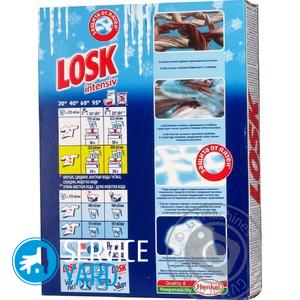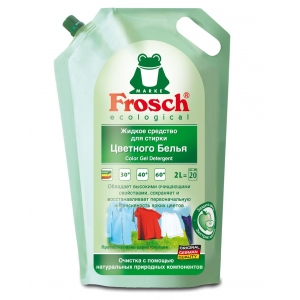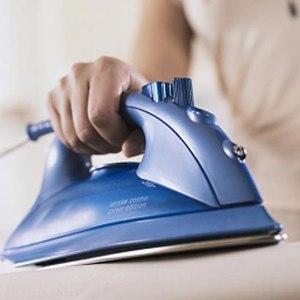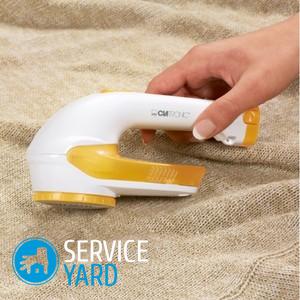How to remove spools from clothes at home?
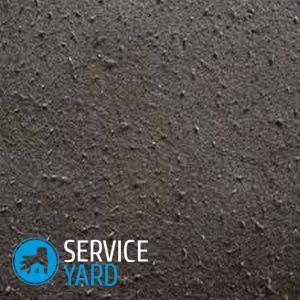
Oh, these clothes spools! Once they appear, and the most elegant jacket looks as if it is suitable only for the garden. But do not immediately get upset. Spools, of course, can be considered the first sign of wear, but the life of a dress or trousers can be extended long after such a symptom. There are several ways to remove spools of clothing from your home. We will discuss them now.
to contents ↑Where do they come from?
Like other injuries, spools on clothing do not form on their own. There are several main reasons for their appearance, and almost everything can be foreseen - either when buying, or when caring for a thing.
When buying, you should carefully inspect the product and read what is written on the label, first of all - the composition of the fabric. Pellets will appear with a guarantee if:
- on the fabric with the naked eye, broaches of threads are noticeable;
- the product is sewn from too loose material;
- the product is knitted or sewn from a natural material - most often wool;
- the product is made of mixed fabric with a small percentage of synthetics.
Important! It should be borne in mind that on things made of synthetic materials, spools appear extremely rarely, and it is easier to remove them than from woolen and mixed fabrics.But there is another, no less annoying problem with synthetics, which our advice will also help you with.
See also our separate article “How to remove static electricity from clothes?”.
As for the reasons that arise when leaving, there are only two of them:
- improper washing;
- a thing systematically rubs against any surface.
To prevent the spools from appearing
Any disease is easier to prevent than to cure. This also applies to the pellets - with proper care, you do not have to bother with scotch tape and scissors to remove disgusting clots from the item. Preventive measures are simple, but they must be taken systematically, otherwise there will be no sense.
Washing mode
An important role is played by the choice of washing powder. At the hardware store, pay attention to detergents that soften the fiber. This is usually indicated on the label.
You, of course, may not like the smell of such a powder, but then you have to choose what is more important: so that the clothes smell pleasantly or so that there are no spools on it. However, getting rid of a specific smell is easier than getting rid of spools.
Important! Pay attention to what fabrics the product is intended for, as well as what composition of water it can be used for. In order not to drown in the wilds of household chemicals on store shelves, we recommend that you first familiarize yourself with our reviews of different detergents:
The second important point is to observe the washing mode. For fabrics on which spools appear most often, use the delicate wash mode. Knitwear should not be rubbed and twisted. Not only are the spools from such treatment “multiply and multiply,” the thing itself also loses its shape. A very useful tool is air conditioning, it prevents the stall of fibers.
Important! Knit fabrics should be ironed in accordance with the marking on the label - the permissible temperature is indicated there. So that you definitely do not have any problems with the choice of modes,Take advantage of our detailed reviews:
There should not be many spools
You do not have to be a visionary to understand that getting rid of a dozen pellets is much easier than getting rid of a hundred. Therefore, follow a simple rule: remove the spools as soon as they appear. Several fallen fibers can be removed even with scissors, it will not take much time.
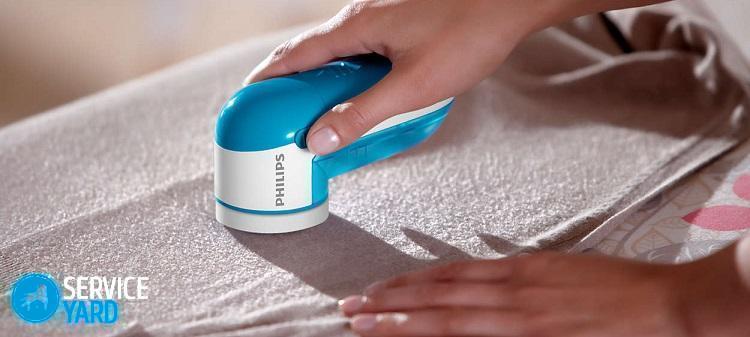
How to get rid of spools on clothes at home?
An expensive evening knitted dress, of course, is better to be dry cleaned. There they will clean it and remove the spools. You should also do with a men's business suit. But cheaper things you can try to put in order at home.
There are several ways to remove spools from clothing at home:
- special trimmer for removing spools;
- nail scissors;
- blade;
- Scotch;
- Toothbrush.
Machine to remove the pellets
If you have a lot of jerseys, it is best to get such a machine. It takes up little space, is relatively inexpensive, you can buy it at any sewing store, and it will help you out more than once. In order for your purchase to really please and last for a long time, see the useful information about this in our special article "The choice of machines for removing spools".
The advantages of such a machine:
- compactness;
- the ability to adjust the position of the knife;
- safety in comparison with other methods;
- almost one hundred percent result.
Important! Using such a machine, you can quickly remove the spools from clothes at home, even if they are already a whole colony.

Using the machine is easy. All technical specifications are indicated in the instructions, which, of course, it is better to read immediately:
- Put the thing on the table.
- Mark the area where you want to cut the spools.
- Set the position of the knife (for thin fabrics, it should be closer to the surface of the material, for knitted products - further).
- Swipe the machine from top to bottom (for example, from the shoulder to the hem), and then backwards.
- In the same way, process the adjacent area and all subsequent ones.
Important! Do not forget to pour the spools from the container into the garbage bag after work. If the volume of the tank is small, and you decide to restore the appearance of several bulk items with a large number of fallen fibers, it is better to empty the tank several times during operation. So the removal rate will be stable.
Nail scissors
If you have not got a typewriter yet, and spools of clothing have already appeared, you will have to use nail scissors. A not very convenient way is slow and boring, but with some patience and free time, it can be very effective.
Important! The disadvantage of this method also lies in the fact that it is constantly necessary to ensure that the spools do not scatter and stick to the sofa or carpet.
As in the previous method, put the thing on the table. Carefully cut off all the spools. This method is convenient if the spools are still few.
Blade
The method relates to the category of extreme. It takes about the same amount of time as removing the spools using nail scissors, but is somewhat more dangerous. It’s easy to hurt yourself and damage your clothes.
Therefore, it is recommended to use it when:
- little spools;
- the spools are large.

Scotch
Coils on clothes do not have to be cut off at all. The fallen fibers adhere perfectly to the sticky surface and come off the fabric. In this case, there is no danger of damaging the material. The main thing is not to press too much on the adhesive tape, because it can stick to some materials so that it will not peel off later.
What to do:
- Spread clothing on a horizontal surface.
- Apply tape and press gently.
- Remove the tape - the spools should remain on it.
- Cut off the remaining pellets with scissors - not a single sticky surface gives a 100% effect, this is the main disadvantage of this method.
Sticky roller
In fact, this is the same scotch tape, but on some round surface, such as a rolling pin or a bottle. To make such a device is easy, just wrap the subject with adhesive tape. Using the roller is more convenient than just scotch tape, but the effect is about the same, that is, the remaining spools will still have to be cut off with something.
Toothbrush
With things associated with fluffy yarn, it is better not to cut the spools, but to comb them. This is done with a toothbrush. This processing method allows you to remove fallen fibers without damaging the pile.
So that the sweater does not turn into something shapeless and tattered, follow simple rules:
- the brush should be with a soft pile;
- it must be carried out strictly along the fibers;
- after processing, the product must be washed in warm water, to which add a few drops of vinegar.
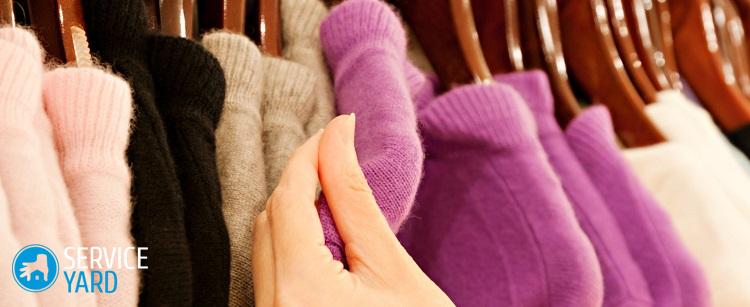
Home remedies
Coils on clothes can be removed using simple tools that you probably have at home. You will find it useful:
- a piece of bread;
- sponge for dishes.
Option 1
A piece of bread must be dried. This can be done in the oven. Take a cracker in places where there is a large accumulation of pellets - they all stick to the bread and separate from the fabric.
Option 2
As a “cracker” you can use a sponge for dishes - best of all foam. The pellets stick to it a little worse than to bread, but still stick. This method is very convenient for knitwear of their mohair and angora.
to contents ↑Important! After removing the spools, clothing needs even more thorough care than before.
Stock footage
We hope you were able to choose the least time-consuming and effective way for yourself to remove the spools from your clothes at home. Accordingly, you managed to put your clothes in order with the help of our tips, and an unscheduled wardrobe update is not required. Wear your favorite things with pleasure, without worrying about fallen threads on the fabric.





